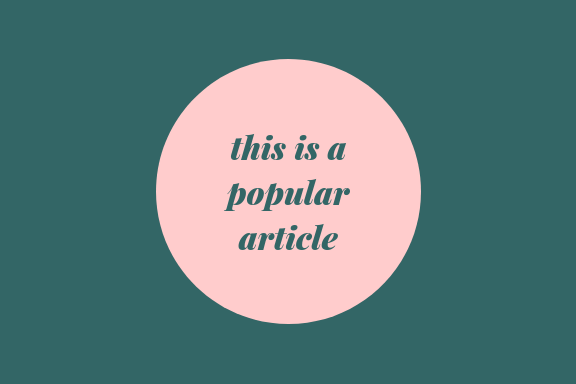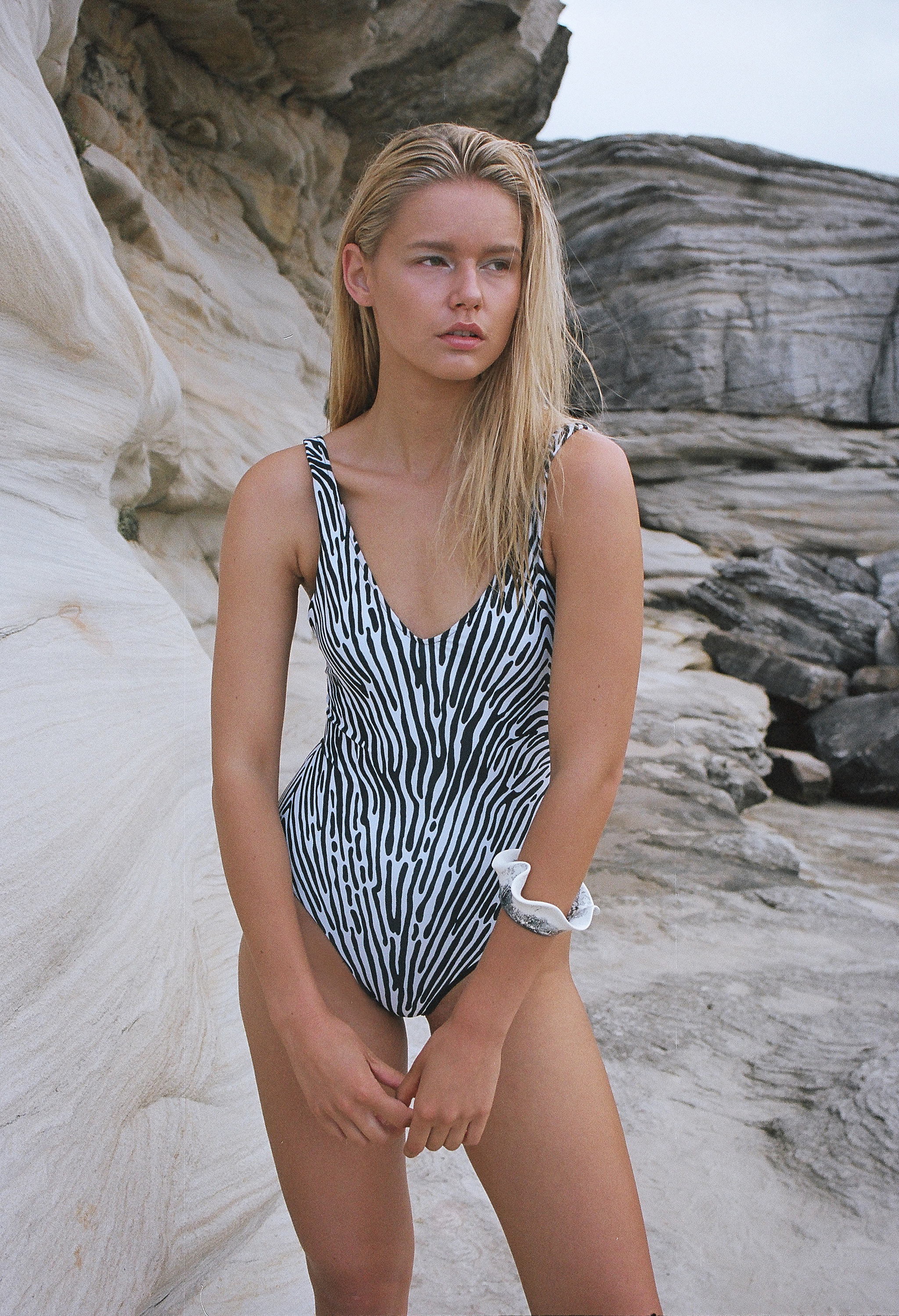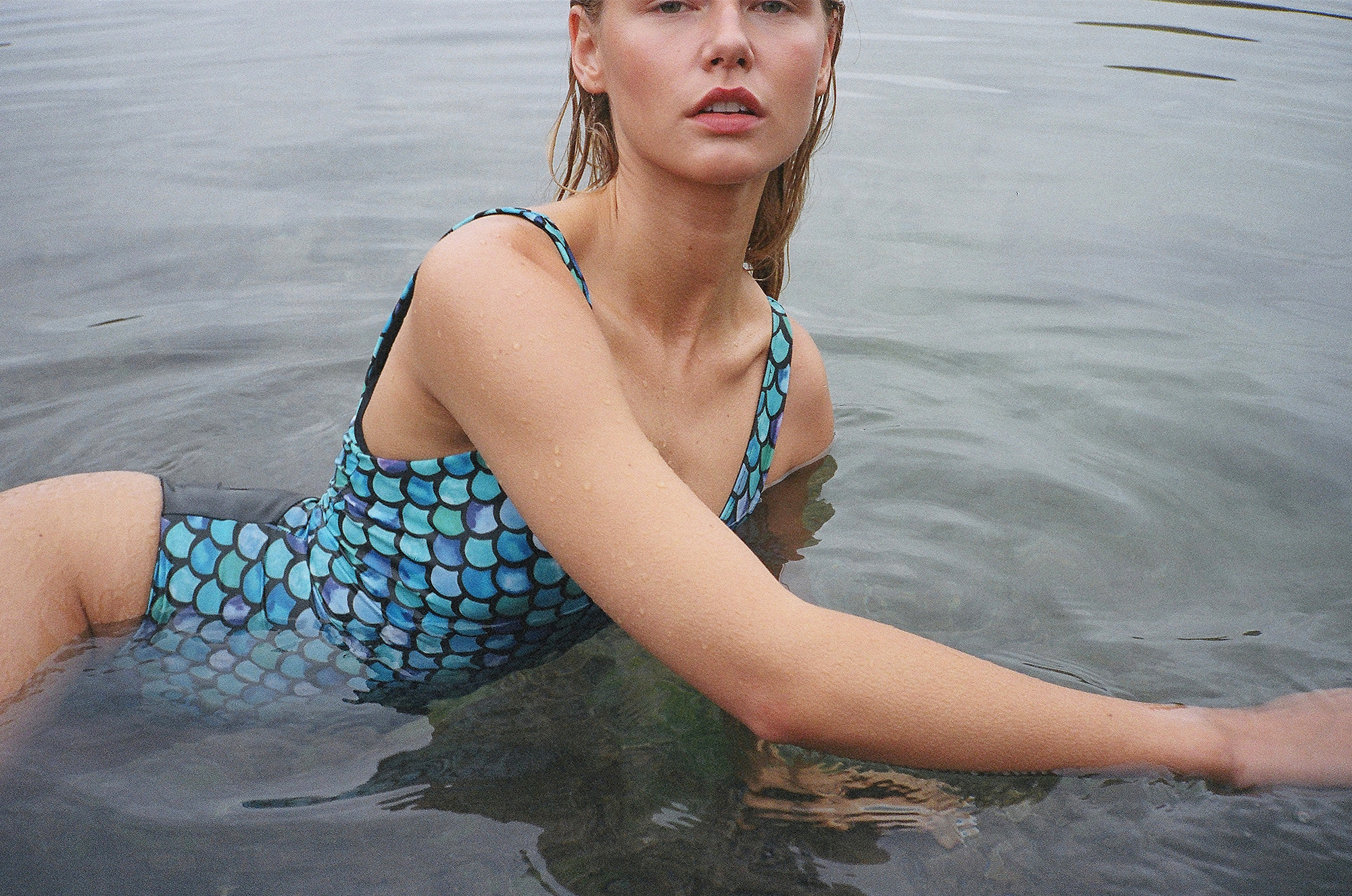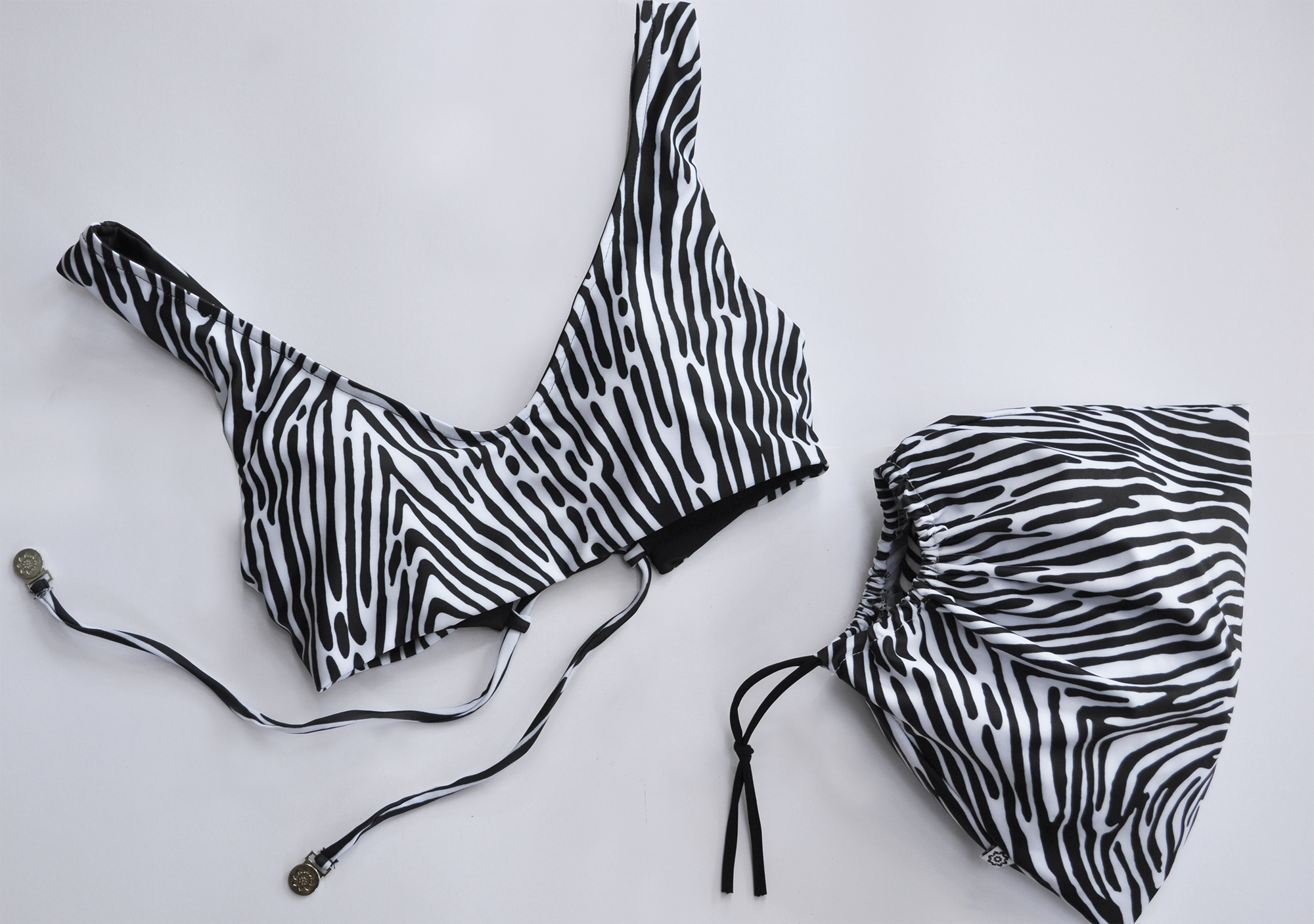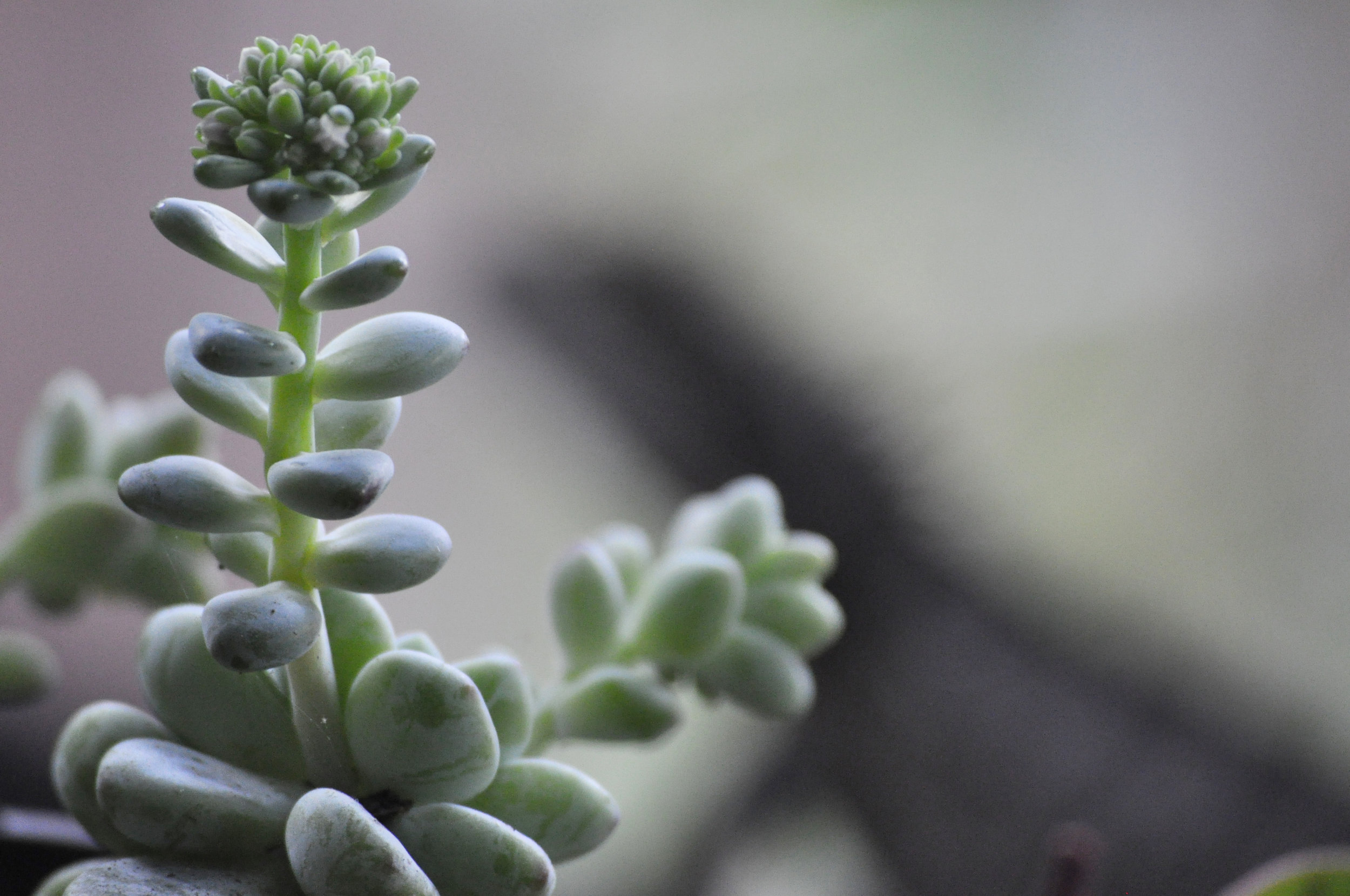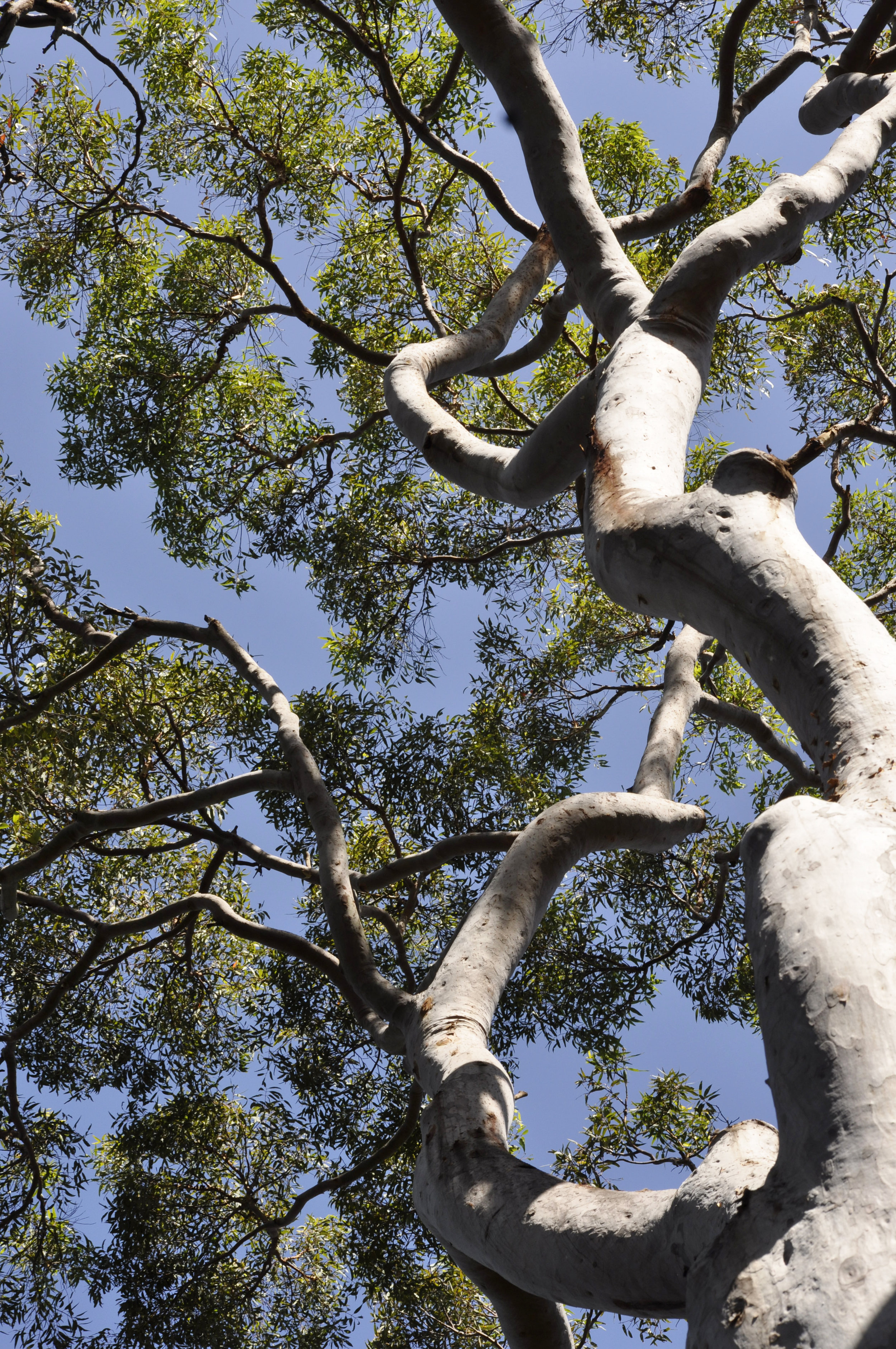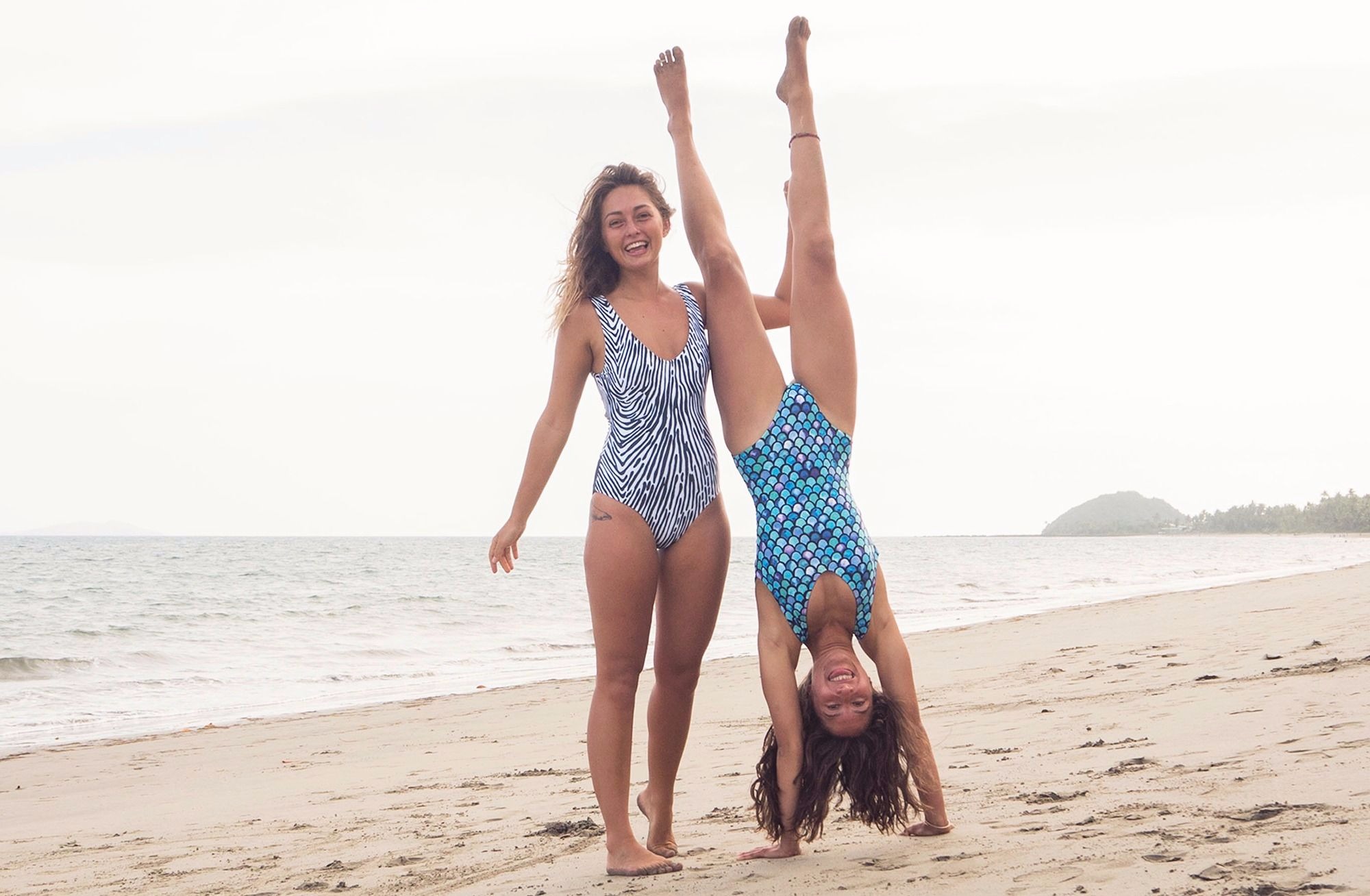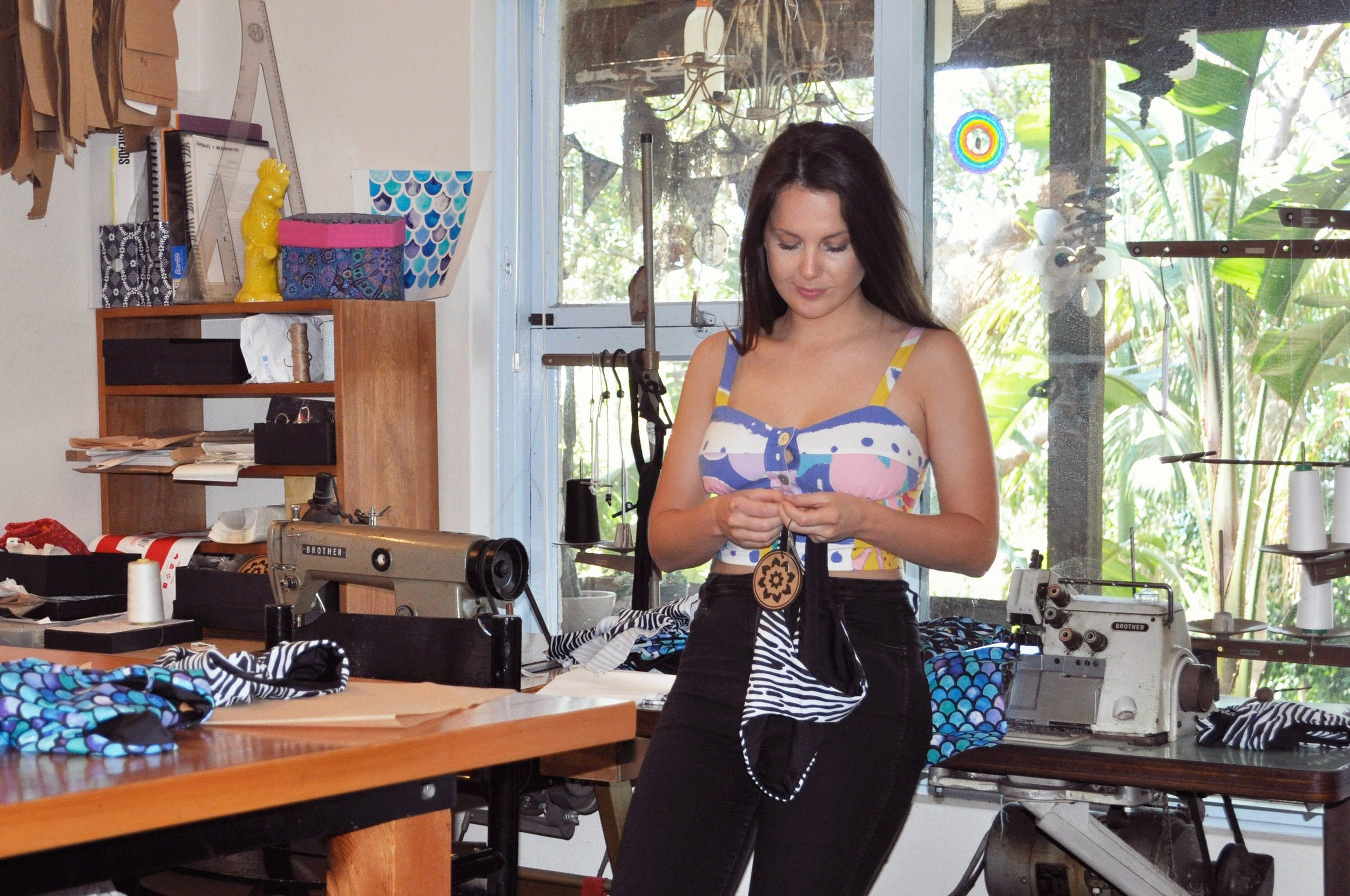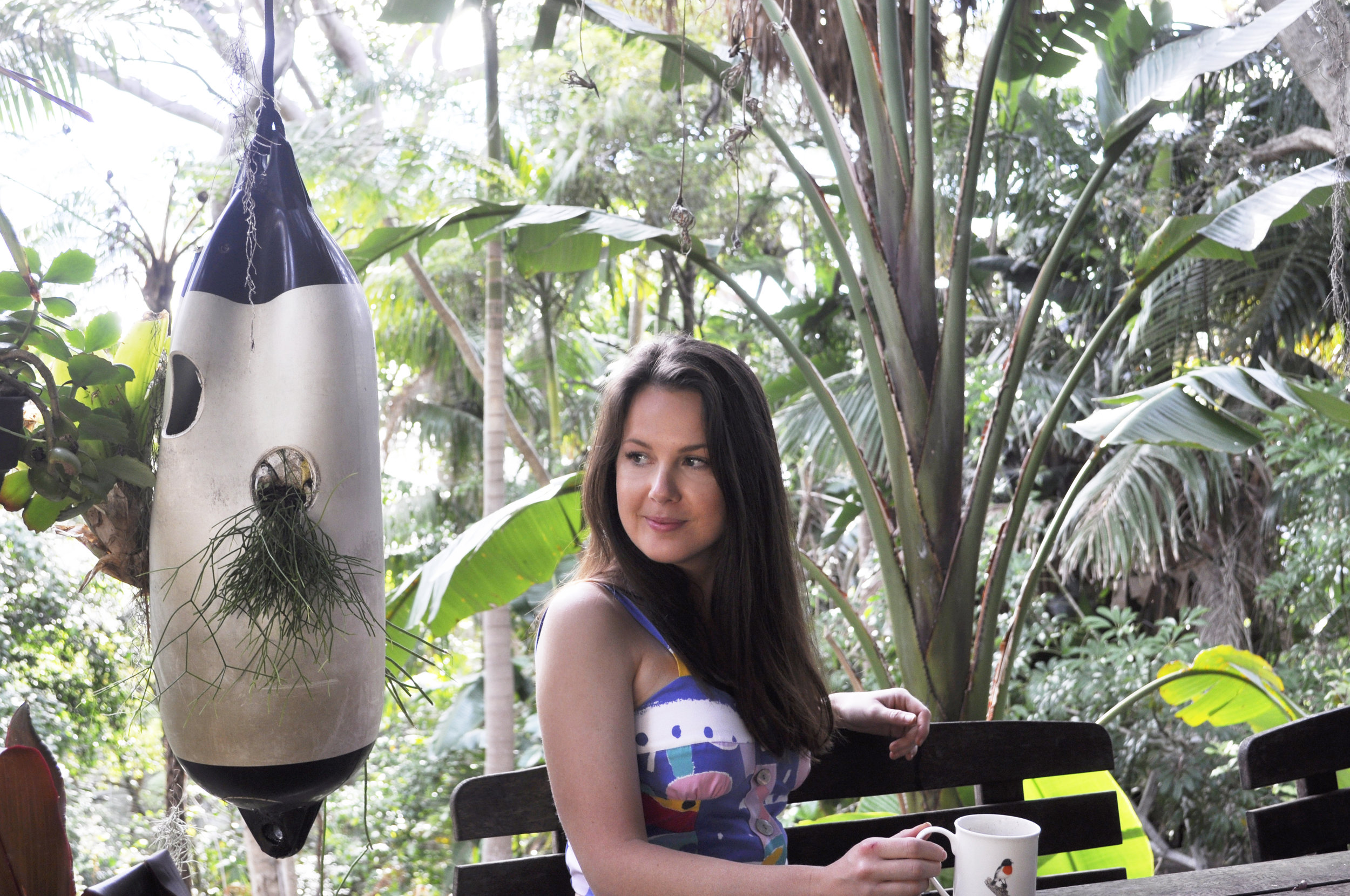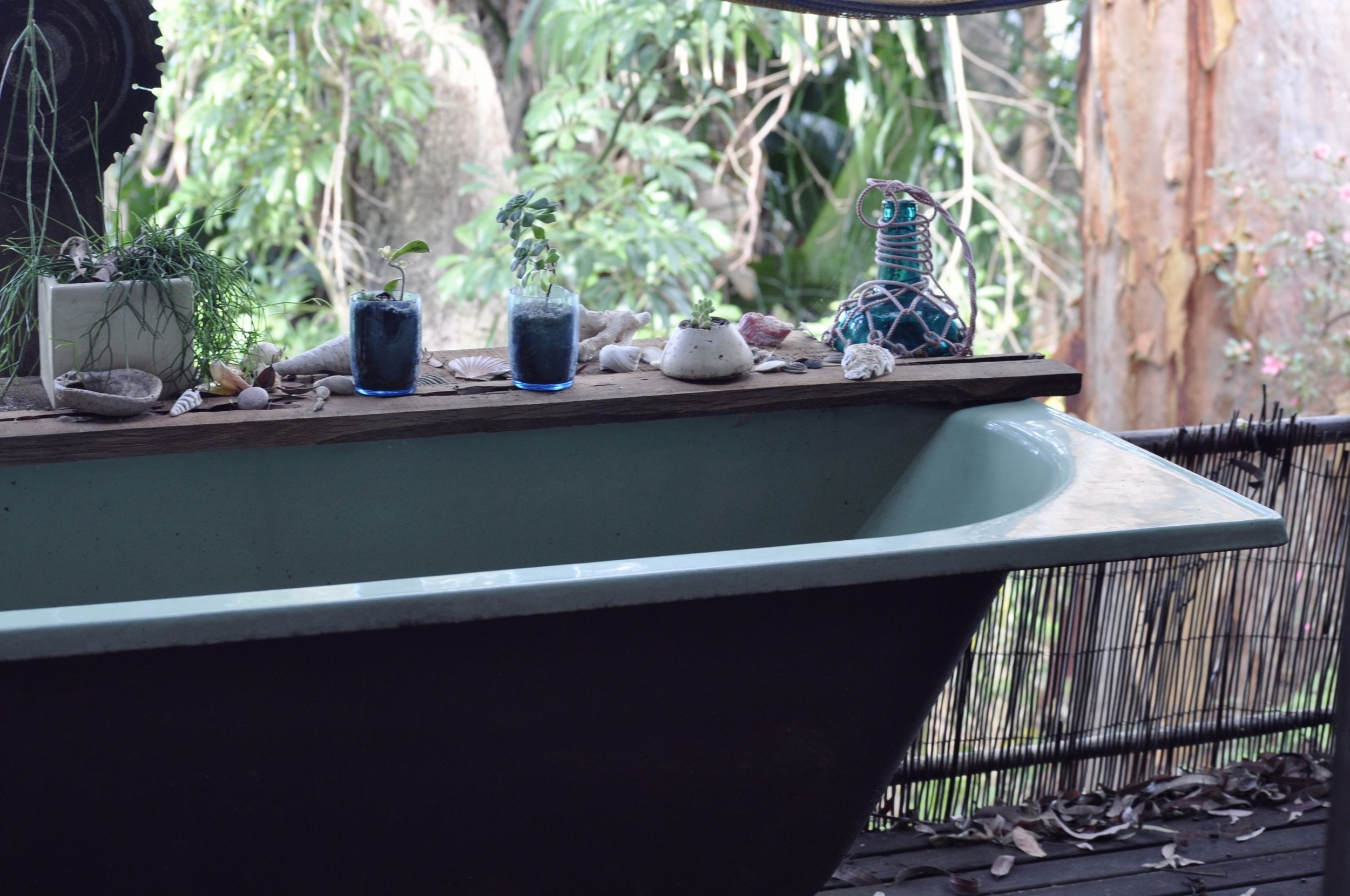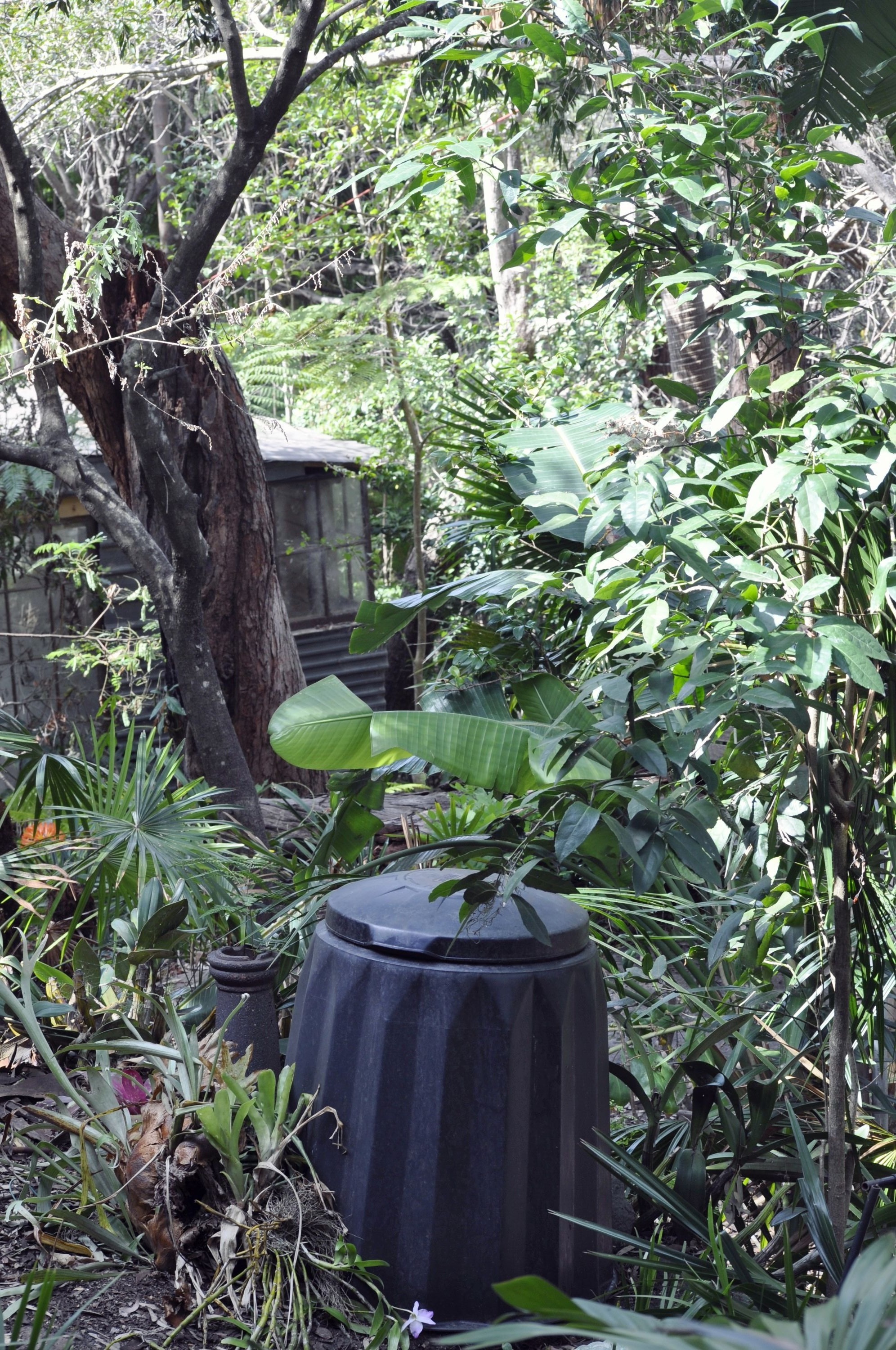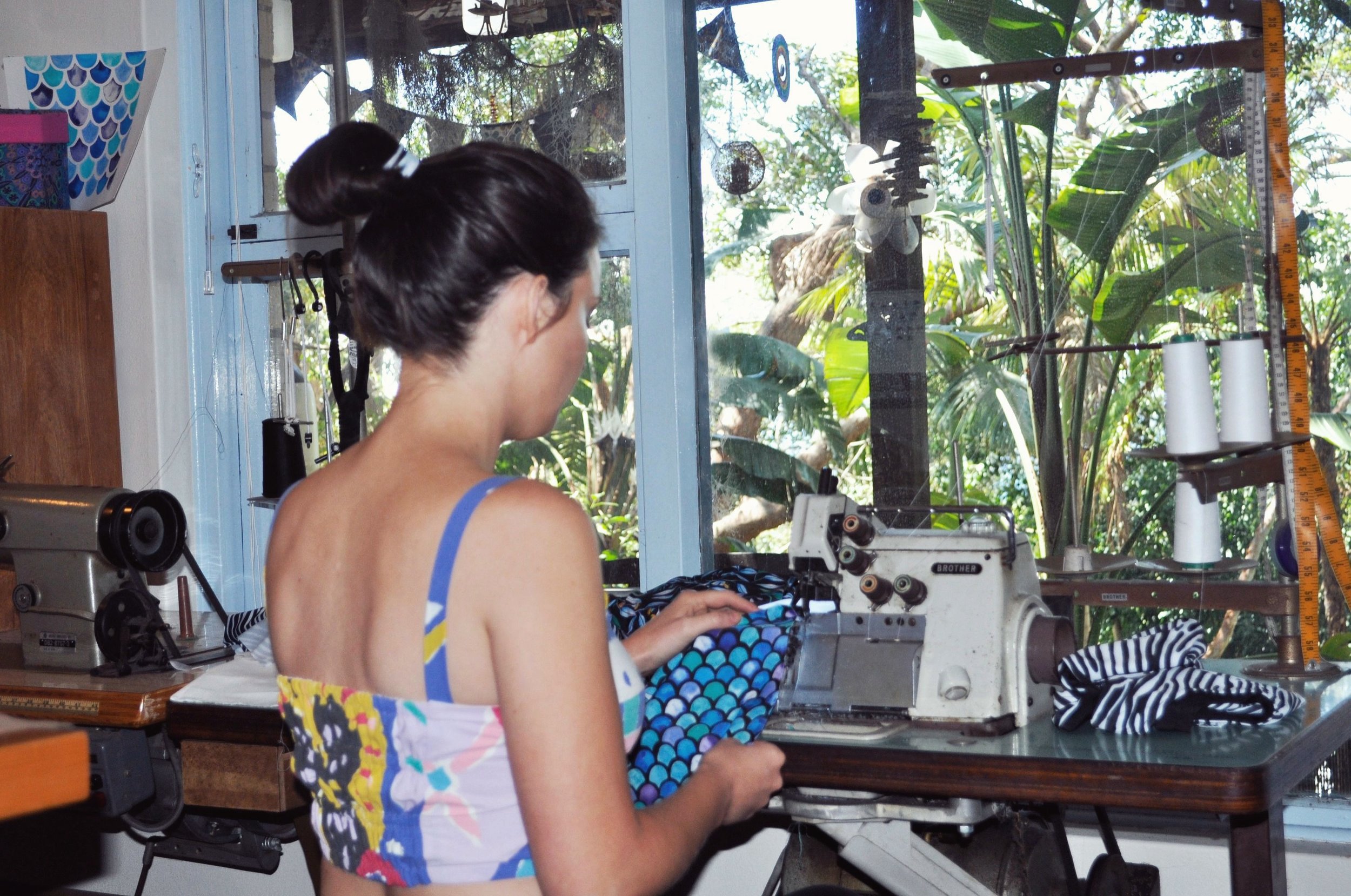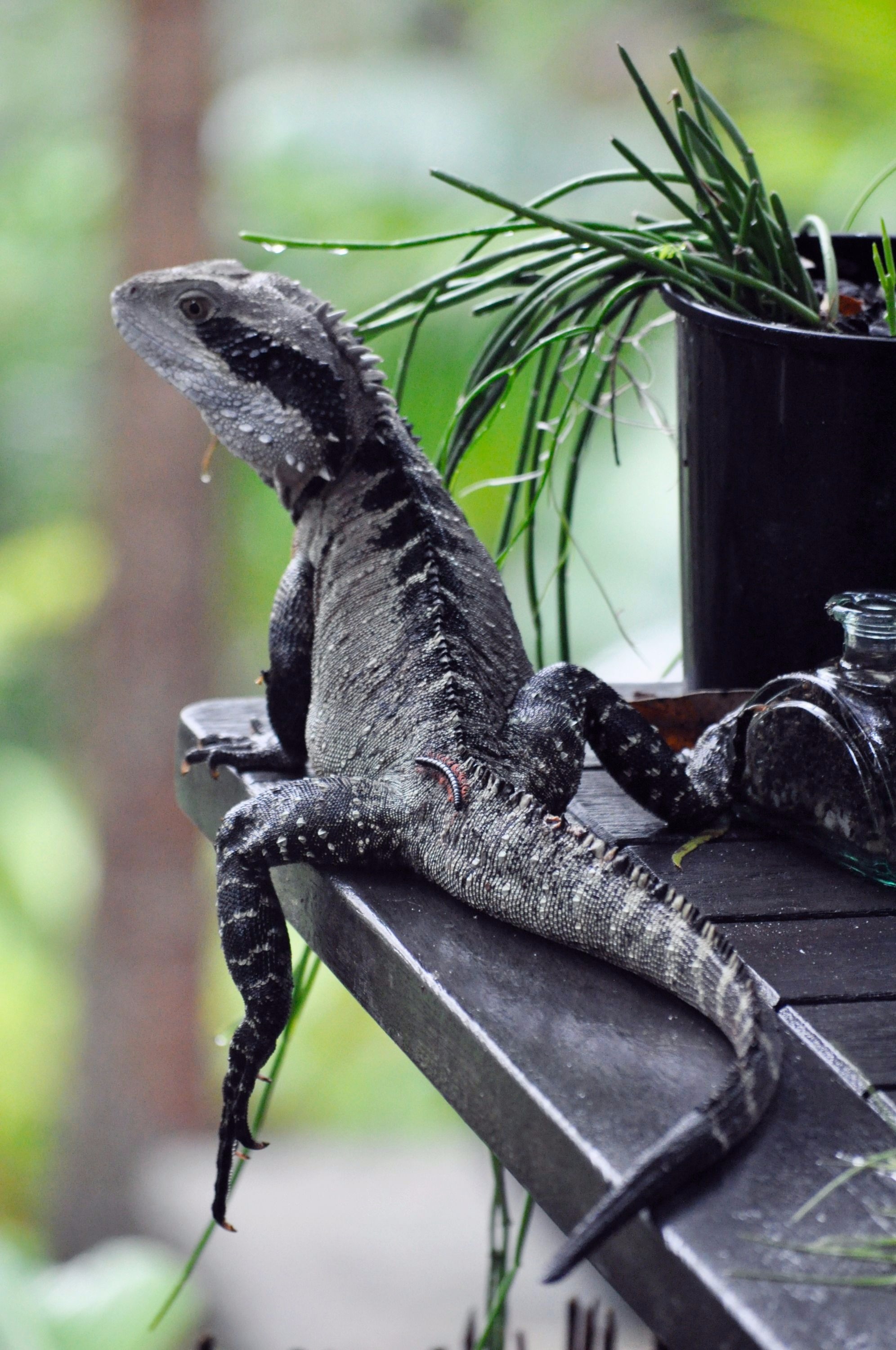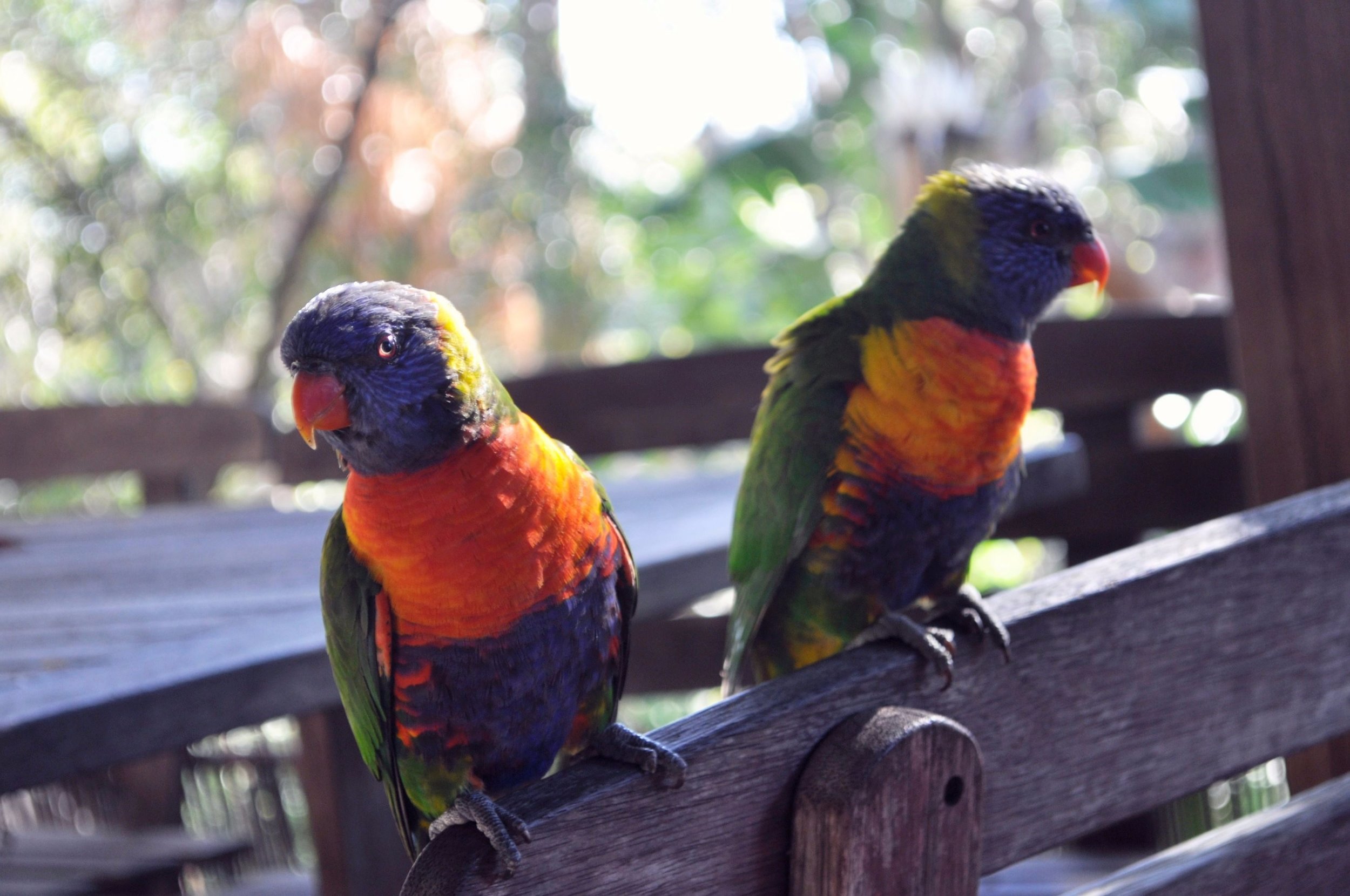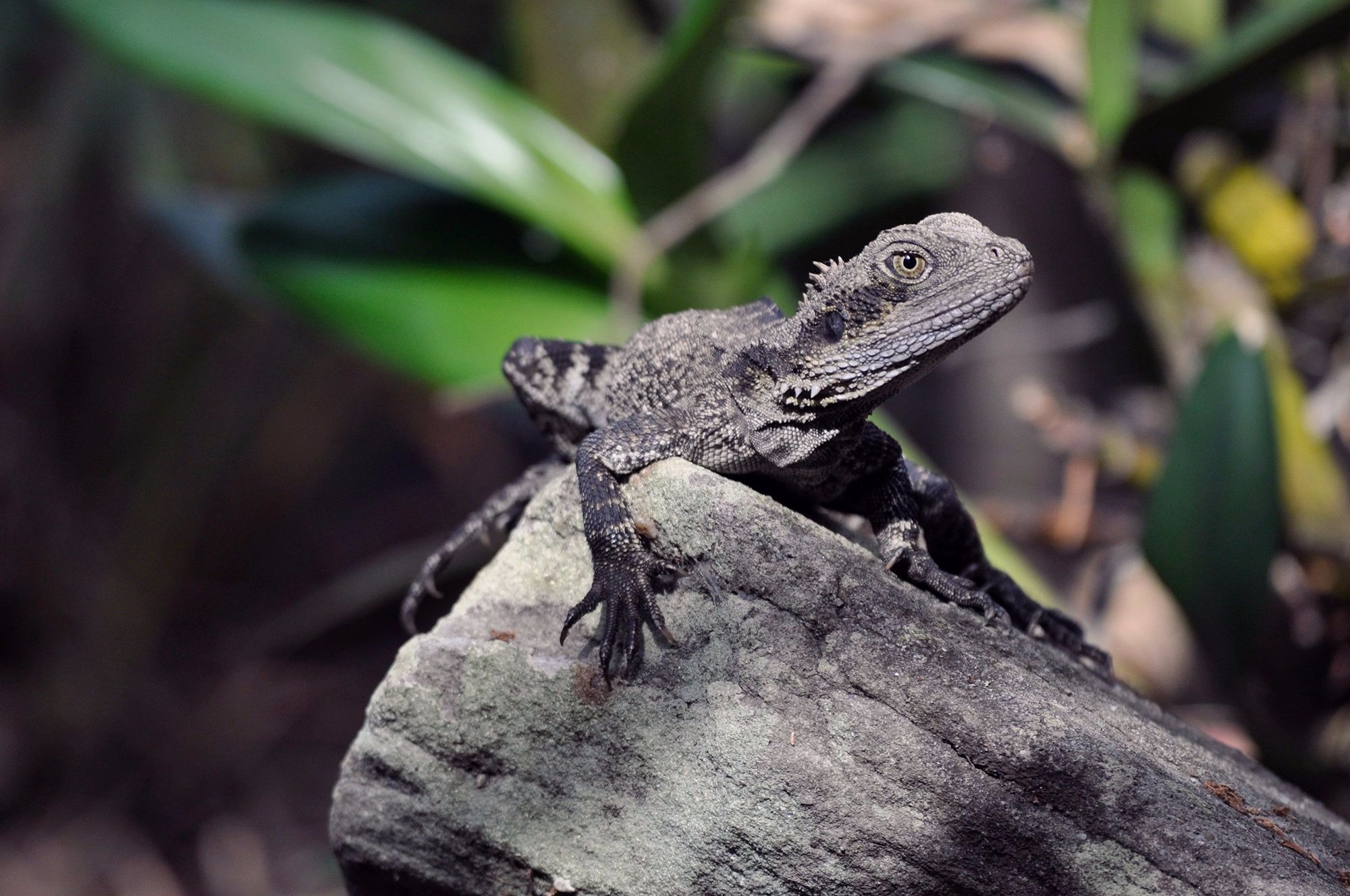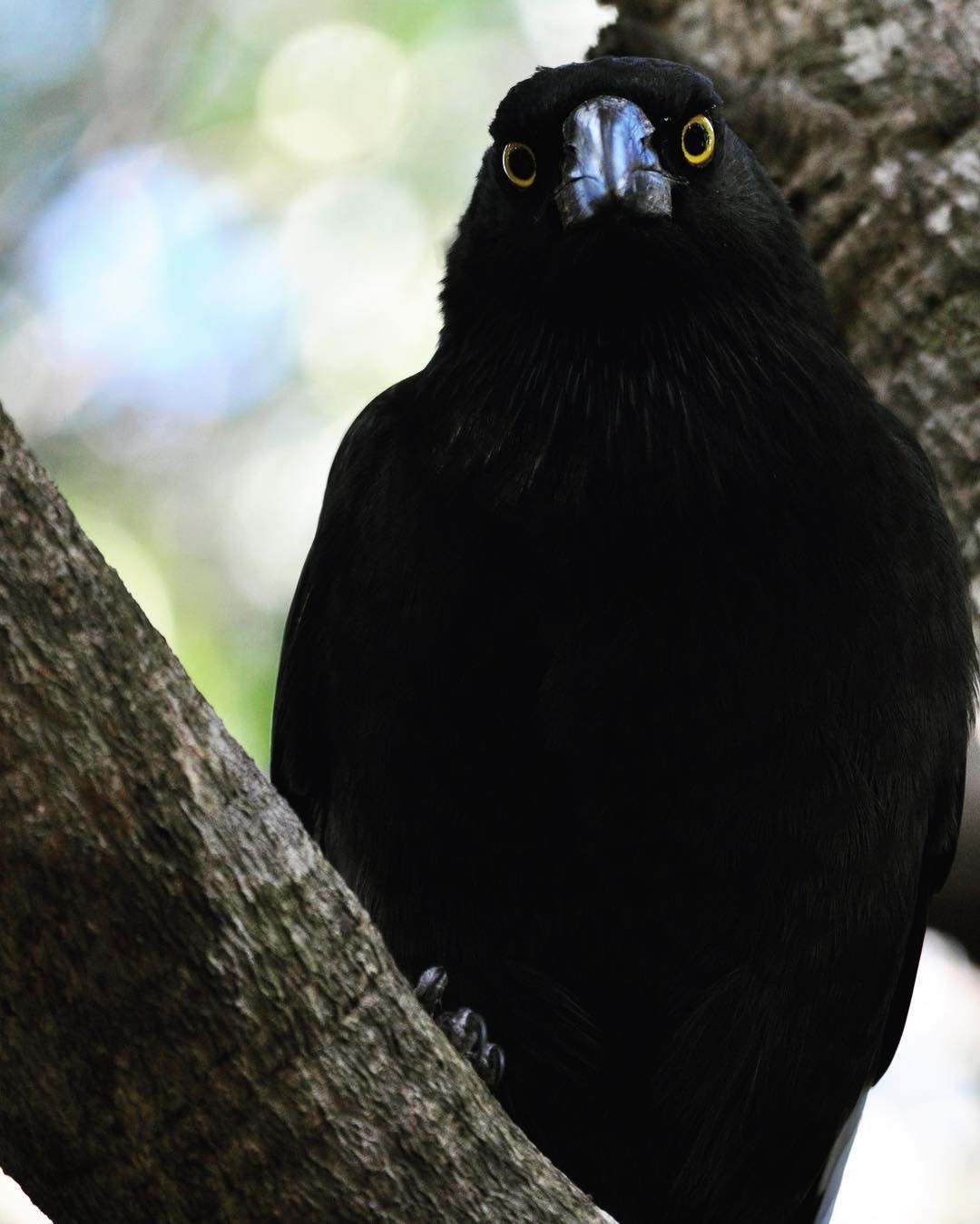| creative women with a conscience | Alexandra Dash Australian sustainable and ethical swimwear designer & founder of 'Shapes In the Sand'
All Photos in this story provided by:
Shapes In the Sand
We met with 'Shapes in the Sand' founder and designer, Alexandra Dash on a Wednesday afternoon at a Surry Hills cafe and we immediately found common ground when we shared that we both were newly vegetarian - this wasn't the only thing Alex and I had in common!
We chatted for hours about what it means to produce locally, and how her forward thinking and innovative brand, uses regenerative fibres (like Econyl and Repreve) made out of leftover consumer waste - that would otherwise have ended up in landfill - and recycled plastic bottles to create her swimsuits. We chatted about her love for the ocean and why it is an essential part of her brand messaging to educate her community on environmental issues, by partnering with relative not for profit organisations each collection to shine a light on the work they are doing, but also to support them by giving back a dollar value from each swimsuit sold.
Alexandra is a true nature girl who believes in the preservation and conservation of our shared natural environment - her mission and philosophy is authentic and full of substance. Not once in our conversation, both off and on the record, did she claim that her goal was profit driven.
Alex is a true creative woman with a conscience on a mission to 'do better, by being better'.
As part of The Girl & The Sea capsule collection Shapes in the Sand are partnering with Tangaroa Blue Foundation. Alex will be donating $15 from each piece sold in the collection to help fund the Australian Marine Debris Initiative, which will aid in beach clean ups along the Great Barrier Reef Catchment.
Head on over to shop the collection now and learn more about this eco swimwear brand making waves!
Where did your affinity with nature come from?
I’ve always loved nature and have found it so inspiring. I remember when I was little we used to live in this apartment and outside there was this tree with those little stink bugs, and I used to pick them off and have them crawl up me –being able to implement nature into my designs has been such an important aspect.
Did your parents advocate a life of play in nature as a child?
I grew up camping, not every weekend, but my parents always made sure we went out. And I do still camp and bush walk a lot.
Do you have an earliest experience in nature that you’re really fond of?
I remember learning to ride my bike down at Balmoral in nature with Dad and the training wheels were coming off – I was always full of energy and would run for miles when I was outside. I just loved it!
What made you want to start your own fashion label and communicate the message of the environment through fashion – why that creative medium?
I’ve always been a really creative person. I studied fashion design and production for 4 years and I also did a textile graphic design and printing course too. I always found myself drawing inspiration from nature. I remember getting my first bikini - so being able to combine two things that I love most - and being able to do good for the future of the environment, I think is pretty awesome.
Did you always know it was going to be fashion?
I think so – I didn’t always know that it would be swimwear though. It was in my second year studying where I became obsessed with swimwear and being able to draw inspiration from nature. With swimwear you can be so playful, which is what’s so cool about it – which is seen through my designs. I’m really bold and quite colourful with the prints
What I really love about what you do specifically is that you tackle the every day girl through your shoots and that there is diversity when it comes to body shape, skin colour and hair colour. So you’re not only making waves when it comes to the sustainability of the swimwear fibres you use, but you promote body positivity in females with your messaging too. You’re tackling the issue of diversity with beauty standards.
Well, they’re called the ‘nature girls’. This is what is natural. What is normal. I think with social media, a space where there’s so much photo shopping, there’s a growing need for more and more labels to promote the natural body and include this kind of imagery into their campaigns – which we’re seeing a change with. I think this is really important because that’s what we actually look like!
Not only is your brand a swimwear brand, but it’s a form of education as well, and I do like on your site that there are so many areas of education when it comes to caring and maintaining for your swimsuit, as well as what is happening with our oceans. Why do you feel as a brand it’s important to educate people, support not for profit organisations and provide the community with knowledge?
Working with not for profit organisations each season is an important part of the Shapes in the Sand philosophy to help raise awareness in areas of concern for the particular environment chosen for that season. I believe that it’s time we give back to the environment and by working together we can create an even greater positive impact towards this goal.
That’s actually why as part of The Girl & The Sea capsule ‘Shapes in the Sand’ partnered with the Tangaroa Blue Foundation, to help raise awareness and funding for their remote beach clean ups particularly along the Great Barrier Reef catchment. Their beach clean ups start in August, and go right through to next year. $15 from the sale of each swimsuit sold goes directly to the foundation which will help run the clean ups.
I really wanted to get the message out there to others - that with marine debris in particular – there’ll be more plastic in the sea than fish by the 2050 so that people can implement more sustainable ways into their lifestyle like not using straws and plastic bags - I think that’s really important and at the end of the day we’ve all got to do it as a whole to make something happen because the ocean is everything.
You live near the water, right?
I do.
And do you see plastic often?
I actually do beach clean ups all the time because of it - there’s a really great organisation called The Living Ocean, which are based in Avalon so they constantly do beach clean ups too. It’s not so much the big pieces of plastic, it’s the tiny ones. If you use your eyes, you’ll see the tiny pieces everywhere and they’re hard to pick up. You need like a giant sieve to collect them all.
Over time they break down from the sun and they even keep breaking down in the ocean.
We’ve stuffed up big time.
Shifting gears a little and looking at your brand ‘Shapes in the Sand’ a little more – can you run me through what your manufacturing process is like?
So you’re locally made?
Yep! It’s all Australian made. At the moment I’m producing 100 units of each style – so this has been my biggest collection yet.
There is about 400 units altogether – it’s a decent amount, but it is still really small. I use Econyl, which is a 100% nylon regenerative fibre, so they take back consumer waste, regenerate it back into its lifecycle and then they send it off to the fabric maker, which can be anyone. They then mix it into their fabrics – so the fabric I use is Econyl mixed with Lycra Xtra Life, which ensures that the swimsuit is going to be long lasting. It’s an incredible fabric and it’s all made in Italy.
How did you start researching all of this?
I think 3 and a half years ago I was one of the first swimwear labels in Australia to start using regenerated fabric - I didn’t have the brand awareness back then, that I do now. I’m seeing more and more labels using these regenerative fibres, which I think is fantastic because it promotes sustainability, but it is becoming a saturated market now.
I actually started researching in my last year of Tafe at Ultimo and I couldn’t find any swim wear fabrics within Australia so I looked to the overseas market because at that time, I was producing a men’s range for my end of year major work as well as a women’s range. For the women’s range I ended up using a normal lycra because I couldn’t find anything else – but for the men’s range I found this American brand called Repreve – and they use all the recycled plastic bottles which create the fibres, so I had to get the fabric I was using certified and it took a long time to do.
So you were even doing this whilst you were at Tafe? Did it have to be using sustainable fibres?
No, that was my personal choice.
How did you become so passionate about this at uni?
It just happened organically because I wanted to do something good for the environment. And I could see that’s where people where moving – to more conscious ways of consuming and living, and using sustainable fibres and diverting our waste by converting this into fibres.
Was designing with sustainability in mind taught when you were at Tafe?
It was starting to be taught. Not really much though. I finished in 2012 and they were just starting to implement the subject.
Did they think it was quite innovative when you said I’m doing this range and using these sustainable materials?
Yeah they did, they thought it was great!
So you must have done really well then?
I did! [laughing]. And that’s when ‘Shapes in the Sand’ the name started as well.
…So how’d you about choosing this name?
We’re all Shapes in the Sand – I think it represents a diversity of women, we’re all different shapes when we look at body shape and it also symbolises nature and how nature is imperfectly, perfect.
Has the way women in media been represented, something you’ve been conscious of?
I’ve never really been a fan of photo shop and we try to stay clear of that. We do photo shop some of our images, but only the lighting if it needs it. We would never get rid of a stretch mark – that’s just what someone looks like.
I think ever since the evolution of Instagram there has been a lot of pressure for women to look a certain way and there’s been this increase in young girls getting boob jobs and lip jobs and I think this online space can be, at times, dangerous. So it’s important to put healthy and positive messages out there about body image.
So when it comes to the shipping and packaging of your goods what do you do?
So for the packaging I use all recycled materials – the only thing that isn’t recyclable is the actual postage bag. I use tissue paper, craft stickers and jute wrapping.
I came up with the idea to use these dissolvable stickers to represent hygiene stickers – because the traditional hygiene stickers are really thick, yucky plastic. The hygiene stickers are made from wood pulp and non toxic inks, so all you need to do is just tip them into water and they dissolve - you can then just pop it into your pot plant.
I’ve found that when you are someone who is interested in sustainable fashion, you do also adhere to a slower lifestyle, conscious consumption and mindfulness in general. Is there a ritual or a practice that you do every day to keep yourself centred?
I try and go for a walk down the beach, I’ve actually started doing ocean swimming just in the ocean pool – I’ve had to wear a wet suit a few times because the waters been that freezing. You feel so refreshed afterwards, and then I’m able to just get back home and get back to it with my work. I have started doing a bit of yoga at home too – mainly stretches - that’s become a bit of a ritual as they make me feel so good!
What does slow living mean to you?
Waking up when you want. Just being conscious of every little thing you do throughout the day – and having it at the forefront of your mind.
We talked a lot about off the record plastic straws and cups. What would you recommend to somebody who is starting out on this sustainability journey?
There are so many ways we can implement a more environmentally friendly lifestyle into our day-to-day routines. And without sounding like a broken record as I am sure you have heard them all before, here’s my top list of ways.
- Ditch plastic bags and choose go green bags, make your own or find Boomerang bags in your community and get involved!
- Rather than ordering takeaway try and eat out at the restaurant.
- Bring your reusable coffee cup wherever you go. Some cafes even offer a discount for bringing your own cup!
- Reduce waste and compost your scraps
- Be careful when washing your synthetic fibres in the washing machine. It’s a good idea to use a laundry bag. Nano plastics are tiny particles too small for the eye to see, and are in our synthetic clothes, these fibres can be released into the washing cycle and sent into the ocean. This could be the case with old or cheaply made garments, where the fibres loosen quicker or are already loose.
- Buy less and choose well. Choose high quality products that are going to last!
For those of those of us who don’t know about Boomerang bags can you explain what this is?
Boomerang bags started as small community initiative in QLD, i'ts basically getting communities and suburbs involved in reusing bags. Usually stores within a suburb will have a boomerang box and they’ll have the bags in them. When you buy something you’ll take one, put your stuff in it and take it home. The idea is that you then take the bag back. If you don’t have a Boomerang bag initiative in your community you can also make your own bags out of old t-shirts.
You were saying before that any material that is left over from your swimwear production you use it. How do you go about doing that?
I use the scraps that are left over to make little carry bags for the swimsuits to go in.
Would you say you have any waste in your production?
A little bit, unfortunately there’s always a little – I’m not zero waste. Being zero waste is almost like an art as well - you have to be really mathematical with the way you do your patterns. My makers really understand my label, and that I try to aim for as minimal waste as possible. He [my maker] tries to get as much out of the fabric as he’s so great with laying it out and getting a good cut on it.
Are there areas where you feel like you’d like to improve in your every day life?
Yeah definitely, there’s cling wrap, which I hate. We don’t use it as much as we used to in our household. But there’s the bees wax fabric wraps as a good alternative – I actually want to make some!
How did you go about doing research to find your maker? What advice would you give to somebody who is starting out and doesn’t know where to look?
Make sure you get a sample made first – I know that that they cost money, but it will save you from making mistakes which then lead to waste. Doing your patterns digitally is also a great thing because you can do all the designing and measurements in the program. Then you print it out on the paper, and you can do your whole lay on the paper as well so you can save as much fabric as possible.
Why do you think it is important to produce locally?
It allows me to keep track of every little thing that is going on, if it was overseas it’d be quite difficult. Having something that is Australian Made is great – and I know that just because a product is Australian Made, doesn’t mean that it’s made well, because there’s a lot of labels that aren’t..
…When you say made well what do you mean?
I mean ethically and also made with high quality as well. There are sweatshops in Australia not just like the common ones overseas that people think of.
I think sometimes people often associate sweatshops with being just offshore in places like Bangladesh.
When I first started on my little journey as a student looking for a manufacturer I did come across a couple that looked a bit questionable..
What did that look like? What made you think they weren’t places that were producing ethically?
They were small, crammed, quite a few workers – not hundreds of workers - but the standards didn’t look right.
Where you get your goods produced, do they tick the ethical box?
Yeah they do!
Were there certain questions you asked to find that information out?
Of course! When Jacinta Fitzgerald from Project JUST interviewed me I spent a lot of time finding out the relevant information, which followed by Shapes in the Sand being awarded the Seal of Approval status. Jacinta really asked the serious questions! I had to ask my maker how much employees were getting paid per hour, whether they were getting paid on a casual basis or full time basis.
And it wasn’t just the manufacturing, I had to state where I got my swing tags made and where I get my labels done – all that sort of stuff.
Can you talk to me a bit about the eco printing you do?
Yeah! So that process I came about through India Flint, she’s an eco printer based in Australia. The eco printing only works on natural fibres, so basically it’s done using parts of nature in the Scribbly Gum design from the Spirit of the Bush collection it was Eucalyptus leaves and Indigo dyes that were used. There are many ways to Eco print however the process I went through was done using a number of sticks from trees. The fabric was laid out and the leaves were placed in an assortment on the flat fabric. The fabric was then rolled up onto the stick and tied with jute. It was then boiled for 1-2 hours in an Indigo dye bath. The dyes from the leaves are drawn out to create the leaf shape on the fabric. Its unreal! You can go nuts with the colours which is pretty cool. I wanted to get it onto the swimwear, but because it only happens on natural fibres, I did the print development on a natural sample and then I put it on the computer and then developed the repeat in illustrator, so it was then printed again onto the lycra fabric.
As it was part of the Spirit of the Bush collection it was done for a special project with wires wildlife rescue. So a portion of each sale went to helping build a koala care facility that they’re building this year. Though I only raised $1500, it was a decent amount to go toward the facility.
I actually want to talk more about that, you affiliate yourself and partner with organisations that make a difference ..
When you want to partner with people, are there certain criteria they need to check?
They have to be a legitimate organsiation, they can’t be wanting to make money for themselves. They have to be interesting and unique and have a project that will draw attention.
Who have you partnered with so far?
Wires Australian Wildlife Rescue and Tangaro Blue Foundation.
The other thing I noticed on your site is that you have ambassadors now…
So that’s just something I’ve started in an effort to spread the message a little bit further.
Currently we have Melinda Brown, who studied marine biology and just recently won the Rolex Scholar award – this has enabled her to go and work with the ocean agency – she’s basically a fish, she’s so passionate about it! I couldn’t have chosen a better person – so basically what I do is I send them some swimwear and I get them to just wear it. In a sense they’re content creators, but they’re doing it for a good purpose.
Not to just add another thing to the Insta feed…
Exactly, the content has to actually be connected to our mission.
With my mission here at Shapes In the Sand, I want to push the less is more mentality and to only buy high quality pieces – like buying one swimsuit, which is going to last longer, than the 5 that someone else may buy.
For you would you say it’s about generating a larger audience so that you do have a broader customer base that is buying less frequently, but more of them?
Yes, and even getting a wider demographic that may not necessarily be my target audience and then hopefully educating them through the work that I do about issues they may not have already known about.
How do you personally get people to care about the environment outside your label?
I try to get friends on board for the beach clean ups that I do, and I’m constantly talking about environmental issues and bring these to the forefront. My label is my voice though, and this is my way of expressing my opinions and the issues that I’m passionate about.
So Shapes in the Sand is both a reflection and an extension of who you are.
Exactly - it’s not just a label - it’s a lifestyle.
What’s the goal for your brand?
I want to be Australia’s number 1 sustainable swimwear label. I’d like to work with not for profits on closer and higher levels as well and be able to help them out more and more.
Do you have minimum quantities that you have to meet when producing?
No, but it does mean if I only get 40 made of something then it’s going to cost me a lot of money. And then the samples are $50 each too – for just one sample. When you hear that you think it’s not that much, but from a business point of view, when you’re getting it made for certain quantities its actually a lot of money.
So, do you think it’s important that we have female founders in business?
Yes of course!
Why do you think it’s important?
Because males and females need to be treated as equals.
Would you call yourself a feminist?
Not a staunch feminist – but I do believe in women’s equal rights 100%. I think it’s very important.
How do you shop for clothes given you are someone who is pushing sustainable swimwear?
I find with sustainable clothing that it is incredibly expensive, but what I’ve started to do is invest in more expensive, good quality pieces. The most expensive item I’ve bought is a piece from Celeste Tesoriero. I bought her black turtle neck, merino cable knit. It’s so gorgeous – I literally did not take it off all winter. But I’m always at Vinnies and Salvos – I’m thrifting all the time!
So it’s a combination of op shopping and choosing really good quality designer pieces?
Yep, I’ve also unloaded a whole bunch of stuff I don’t need and I’m sending it to the op shop. My wardrobe is getting smaller and smaller. I do wish brands were more transparent as there are lots of clothes and labels out there that I love but they don’t have any info about their manufacturing.
Does that stop you from buying?
It does! There have been t-shirts where I’ve said nope I can’t do that because I feel like it’s not going to be made unethically because of how cheap it is.
When you see something that has a cheap price point, you having the background knowledge as a designer and what is involved, does it make you think that it’s cost someone somewhere?
Yes, I definitely do. Most of the time I do, and most of the time I’m right.
Why was it really important for you to have the washing information on your site and this education about Nano plastics?
When I found out about it I felt like I really needed to share the information, because it’s something that even I didn’t know about. And I want people to know that swimwear will be made from a synthetic fibre, and that there is a way around stopping those fibres entering our oceans.
Have you had people engage in your message about mico fibres from what shared online?
I did actually; I had quite a few people, which is really great.
There are swimsuits that are made from cotton, but they just won’t last and the crotchet swimwear doesn’t wear well and it sags when it gets wet so it also doesn’t keep you protected.
So for people who haven’t been on your site and haven’t seen the information o on caring for your swimsuit – what is your recommendation for washing and eliminating these fibres getting into our waterways?
I think the best way is to hand wash and if you have a garden – and I do understand that not very one has a garden – but if you can pour the water in the garden, then it’s better than it being in the ocean.
If it’s actually a well-made, high quality garment, then it’s going to take longer for the fibres to actually come apart. The fabric I actually use is a tight knit fabric so it’s really good quality…
I see, so it’s harder to break down and separate.
And make sure you always put your swimsuit in a washing bag – especially with swimwear.
Also, I have to say, I love your instagram page because you have so many fun encounters with wild animals in your backyard! Do you have a favourite animal?
I love birds and parrots are just so fun and cheeky! I don’t have any animals, but I have lots of visitors that come to see me in my backyard. We have bush turkeys and water dragons. Sometimes I’ll have a break and the next thing you know; I’ve been photographing animals for hours!

